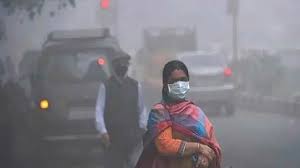Haryana has emerged as the most affected state in India following post-Diwali air pollution, with 10 of its cities among the 16 most polluted nationwide, according to the Central Pollution Control Board (CPCB) daily Air Quality Index (AQI) data. The sharp rise in pollution levels after the festival of lights has raised serious concerns about public health, environmental safety, and respiratory risks.
Jind, located around 130 km northwest of Delhi, recorded the highest AQI in Haryana, reaching 421, categorised as “severe”. This represents a significant deterioration compared to the day before Diwali, when the AQI stood at 248. The toxic smog and high particulate matter in the air have reduced visibility and pose serious health hazards, particularly for children, the elderly, and people with respiratory conditions.
Other major cities in Haryana, including Gurugram, Faridabad, Panipat, and Hisar, also appeared in the CPCB’s list of areas with “severe” and “very poor” air quality. Experts attribute the spike in pollution to a combination of firecrackers, vehicular emissions, and industrial activity, which exacerbate existing air quality issues. Residents are advised to limit outdoor activities, wear protective masks, and follow official health advisories.
The post-Diwali smog in Haryana underscores the urgent need for sustainable environmental practices, stricter pollution control measures, and public awareness campaigns. Authorities emphasize the importance of monitoring air quality and taking precautionary measures to minimize the adverse effects of seasonal air pollution spikes, ensuring the safety and health of citizens.






